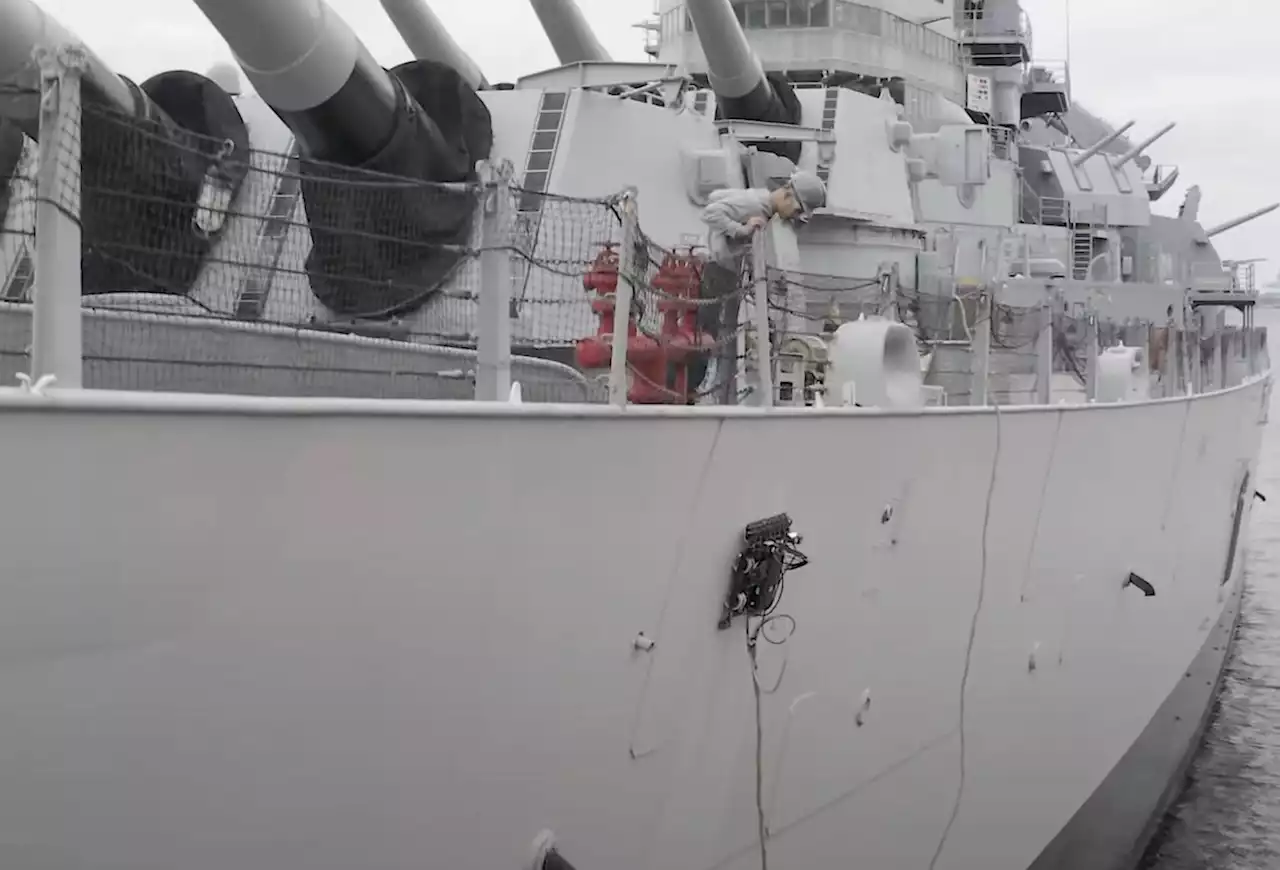US Navy turns to hull-climbing bots to combat maintenance backlog
regional naval maintenance centers, the Navy could save 575 equivalent drydock days per year, Gecko claimed.
"We are proud to have a mature technology that has been tested and approved by both Navy technical leaders and the sustainment officials charged with reducing the Navy's maintenance backlog," said Jake Loosararian, Gecko's CEO and co-founder. The US Navy had previously approved Gecko's Rapid Ultrasonic Gridding inspection process, which uses the climbing robots to collect thickness maps of material like ship hulls facing constant corrosion risks from salt water and exposure to the elements. Those are in turn used to build digital twins of ships onto which thickness measurements are overlaid to indicate which parts of the ship need the most attention.
Gecko has been approved to perform inspections on the Navy's first amphibious assault ships and Arleigh Burke class destroyers. The company also has a contract with the US Air Force, which tapped it late last year to perform inspections at ICBM sites overseen through theProgram. Gecko has also been used in the oil and gas, manufacturing and energy industries, including in the United Arab Emirates, thanks to a deal signed late last year with that country's Ministry of Industry and Advanced Technology to provide its bots for infrastructure inspections.
United Kingdom Latest News, United Kingdom Headlines
Similar News:You can also read news stories similar to this one that we have collected from other news sources.
 Anthony Joshua seals win over Franklin as fight spills over after final bellBREAKING: Anthony Joshua has marked his return to the ring with a confident decision victory over Jermaine Franklin. The Brit secured the victory he needed to revive his world title prospects, controlling the contest over 12 rounds. JoshuaFranklin
Anthony Joshua seals win over Franklin as fight spills over after final bellBREAKING: Anthony Joshua has marked his return to the ring with a confident decision victory over Jermaine Franklin. The Brit secured the victory he needed to revive his world title prospects, controlling the contest over 12 rounds. JoshuaFranklin
Read more »
 Newcastle beat Man Utd to climb up to thirdNewcastle United leapfrog Manchester United into third place in the Premier League table and avenge their Carabao Cup final loss to the Red Devils.
Newcastle beat Man Utd to climb up to thirdNewcastle United leapfrog Manchester United into third place in the Premier League table and avenge their Carabao Cup final loss to the Red Devils.
Read more »
 Amazing love story of women who waited 60 years to marry'When that love is there, you can climb every mountain – and we will do'
Amazing love story of women who waited 60 years to marry'When that love is there, you can climb every mountain – and we will do'
Read more »
 NHS mental health services expected to face full public inquiry to force staff to give evidenceHealth Secretary Steve Barclay is understood to have agreed that changes must be made to the Essex Mental Health Independent Inquiry, after it stalled due to a near total lack of co-operation from current and former NHS staff
NHS mental health services expected to face full public inquiry to force staff to give evidenceHealth Secretary Steve Barclay is understood to have agreed that changes must be made to the Essex Mental Health Independent Inquiry, after it stalled due to a near total lack of co-operation from current and former NHS staff
Read more »
 Non-invasive measurements of respiration and heart rate across wildlife species using Eulerian Video Magnification of infrared thermal imagery - BMC BiologyBackground An animal’s metabolic rate, or energetic expenditure, both impacts and is impacted by interactions with its environment. However, techniques for obtaining measurements of metabolic rate are invasive, logistically difficult, and costly. Red–green–blue (RGB) imaging tools have been used in humans and select domestic mammals to accurately measure heart and respiration rate, as proxies of metabolic rate. The purpose of this study was to investigate if infrared thermography (IRT) coupled with Eulerian video magnification (EVM) would extend the applicability of imaging tools towards measuring vital rates in exotic wildlife species with different physical attributes. Results We collected IRT and RGB video of 52 total species (39 mammalian, 7 avian, 6 reptilian) from 36 taxonomic families at zoological institutions and used EVM to amplify subtle changes in temperature associated with blood flow for respiration and heart rate measurements. IRT-derived respiration and heart rates were compared to ‘true’ measurements determined simultaneously by expansion of the ribcage/nostrils and stethoscope readings, respectively. Sufficient temporal signals were extracted for measures of respiration rate in 36 species (85% success in mammals; 50% success in birds; 100% success in reptiles) and heart rate in 24 species (67% success in mammals; 33% success in birds; 0% success in reptiles) using IRT-EVM. Infrared-derived measurements were obtained with high accuracy (respiration rate, mean absolute error: 1.9 breaths per minute, average percent error: 4.4%; heart rate, mean absolute error: 2.6 beats per minute, average percent error: 1.3%). Thick integument and animal movement most significantly hindered successful validation. Conclusion The combination of IRT with EVM analysis provides a non-invasive method to assess individual animal health in zoos, with great potential to monitor wildlife metabolic indices in situ.
Non-invasive measurements of respiration and heart rate across wildlife species using Eulerian Video Magnification of infrared thermal imagery - BMC BiologyBackground An animal’s metabolic rate, or energetic expenditure, both impacts and is impacted by interactions with its environment. However, techniques for obtaining measurements of metabolic rate are invasive, logistically difficult, and costly. Red–green–blue (RGB) imaging tools have been used in humans and select domestic mammals to accurately measure heart and respiration rate, as proxies of metabolic rate. The purpose of this study was to investigate if infrared thermography (IRT) coupled with Eulerian video magnification (EVM) would extend the applicability of imaging tools towards measuring vital rates in exotic wildlife species with different physical attributes. Results We collected IRT and RGB video of 52 total species (39 mammalian, 7 avian, 6 reptilian) from 36 taxonomic families at zoological institutions and used EVM to amplify subtle changes in temperature associated with blood flow for respiration and heart rate measurements. IRT-derived respiration and heart rates were compared to ‘true’ measurements determined simultaneously by expansion of the ribcage/nostrils and stethoscope readings, respectively. Sufficient temporal signals were extracted for measures of respiration rate in 36 species (85% success in mammals; 50% success in birds; 100% success in reptiles) and heart rate in 24 species (67% success in mammals; 33% success in birds; 0% success in reptiles) using IRT-EVM. Infrared-derived measurements were obtained with high accuracy (respiration rate, mean absolute error: 1.9 breaths per minute, average percent error: 4.4%; heart rate, mean absolute error: 2.6 beats per minute, average percent error: 1.3%). Thick integument and animal movement most significantly hindered successful validation. Conclusion The combination of IRT with EVM analysis provides a non-invasive method to assess individual animal health in zoos, with great potential to monitor wildlife metabolic indices in situ.
Read more »
